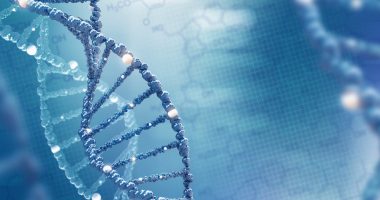1 in a billion case of Angelman plus EB diagnosed in young boy: Report
Child found to have 3 genetically inherited rare diseases in testing

A 9-month-old boy was diagnosed with Angelman syndrome alongside two genetically inherited diseases affecting the skin and hearing, a case study reported.
According to researchers, this is the first case of Angelman reported with epidermolysis bullosa (EB), a rare disorder characterized by fragile skin that easily blisters and tears.
The team noted that a combined occurrence of both conditions was estimated at one in a billion.
Details of the case were published in the journal Clinical Case Reports, in the study, “Coexistence of junctional epidermolysis bullosa, autosomal recessive deafness type 57, and Angelman syndrome: A case report.”
Angelman, JEB, both genetically inherited diseases
Angelman syndrome is a genetic disorder affecting about 1 in 15,000 children, marked by physical and mental developmental delays that emerge in infants between the ages of 6 to 12 months.
Here, researchers in Barcelonan report an Angelman syndrome case with co-existing epidermolysis bullosa and deafness. The boy was delivered by C-section following an uneventful pregnancy, but with signs of skin injuries, including blisters and ulcers across all body surfaces. Antibody tests were consistent with EB.
A genetic analysis confirmed junctional EB, known as JEB, which is a moderate to severe form of EB that can be caused by COL17A1 gene mutations. This gene encodes a portion of collagen, a protein complex that gives structure and strength to connective tissues such as the skin, tendons, and ligaments.
Both parents were unaffected carriers of a faulty COL17A1 gene copy, consistent with JEB being inherited in an autosomal recessive pattern. That means that a genetic condition can occur when a child inherits one copy of a mutated gene from each parent.
The parents were consanguineous, meaning they were second cousins or closer.
We described the first case of AS and intermediate JEB coexistence. … The combined occurrences of both events would be approximately 0.97 cases per billion births.
The infant failed to thrive as early as 2 months of age. At 8 months, he was hospitalized due to breathing problems caused by croup, a common childhood viral illness, and laryngomalacia, a congenital softening of voice box tissues. Soon after, he was seen at the pediatric neurological department on account of overall developmental delay.
Follow-up examinations revealed facial deformities, including weak facial muscles, low-set ears, and a smaller-than-normal lower jaw. He had difficulties eating, was behind other children in developing skills like sitting up and talking, and showed signs of hearing loss.
By 17 months, global muscle weakness was noted, with difficulties sitting upright. Despite these symptoms, he was very sociable and still could play and interact with others. However, his ability to use his hands was behind for his age. He also was unable to speak words and was smaller than most children his age in weight, height, and head circumference.
Because of his overall developmental delays and a moderate-to-severe hearing loss that was not seen soon after birth, the child’s genetic data were re-examined. A portion of chromosome 15 inherited from his mother was found to be deleted — the cause of most cases of Angelman. Neither parent carried this genetic defect.
“We described the first case of AS and intermediate JEB coexistence,” the team wrote. “The combined occurrences of both events would be approximately 0.97 cases per billion births.”
Genes that caused deafness also were examined, which revealed a rare mutation in the PDZD7 gene, also inherited from both the father and the mother. This gene has been associated with deafness in fewer than 20 families, and, alongside Angelman, may be a significant barrier to the boy’s language development, the researchers noted.
The boy now is uncommunicative, and does not cry, babble, or make demands on his parents.
“It is critical to emphasize how essential it is to continuously consider new signs and symptoms over time, as this may result in a more accurate or even a new diagnosis,” the researchers wrote.







